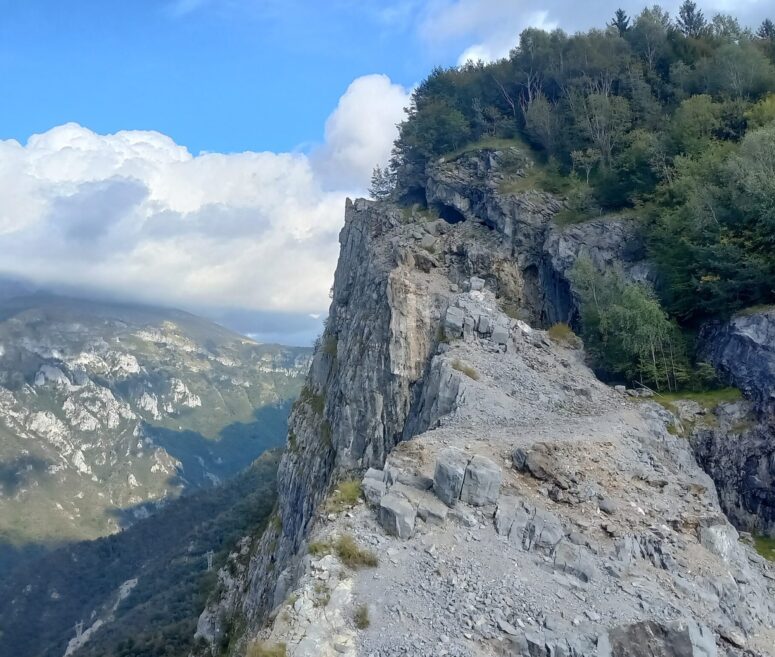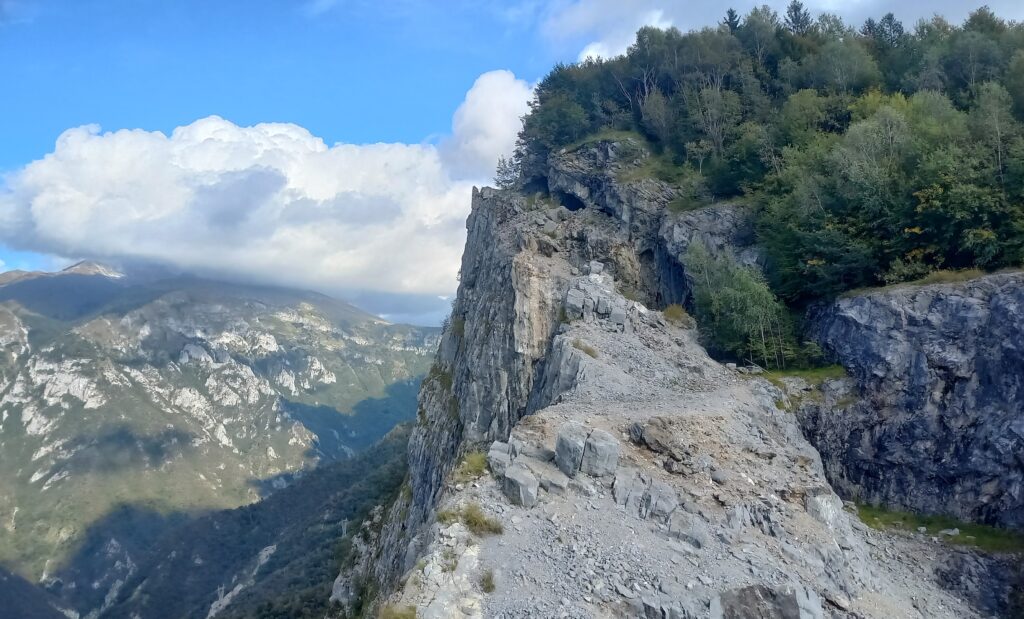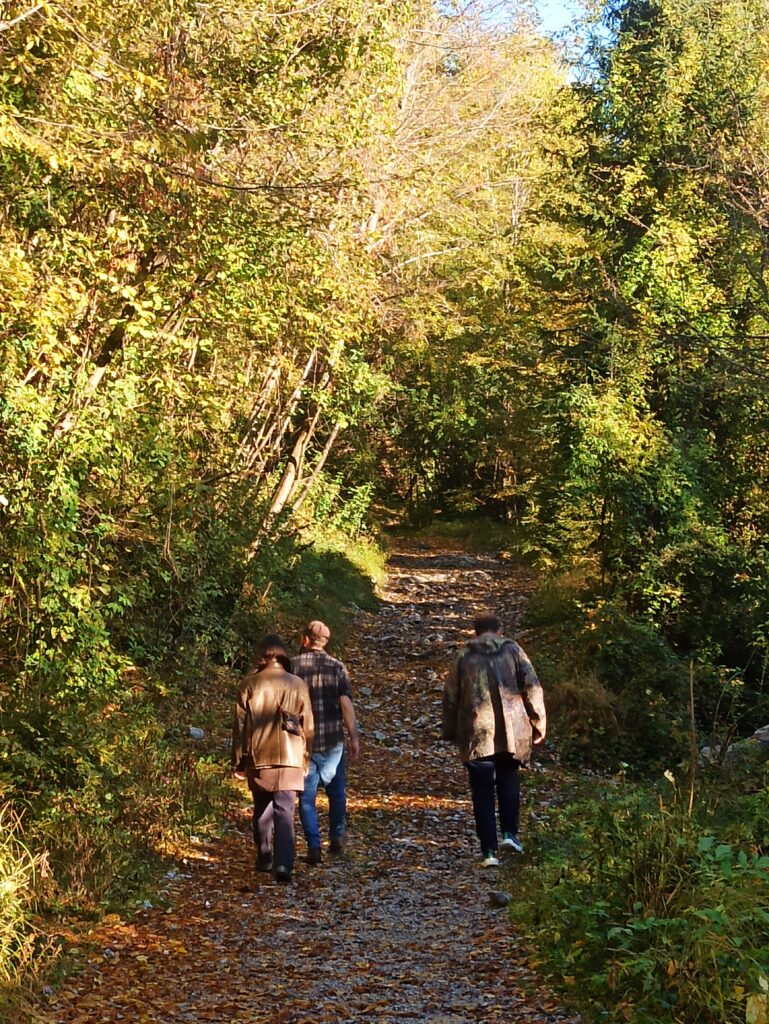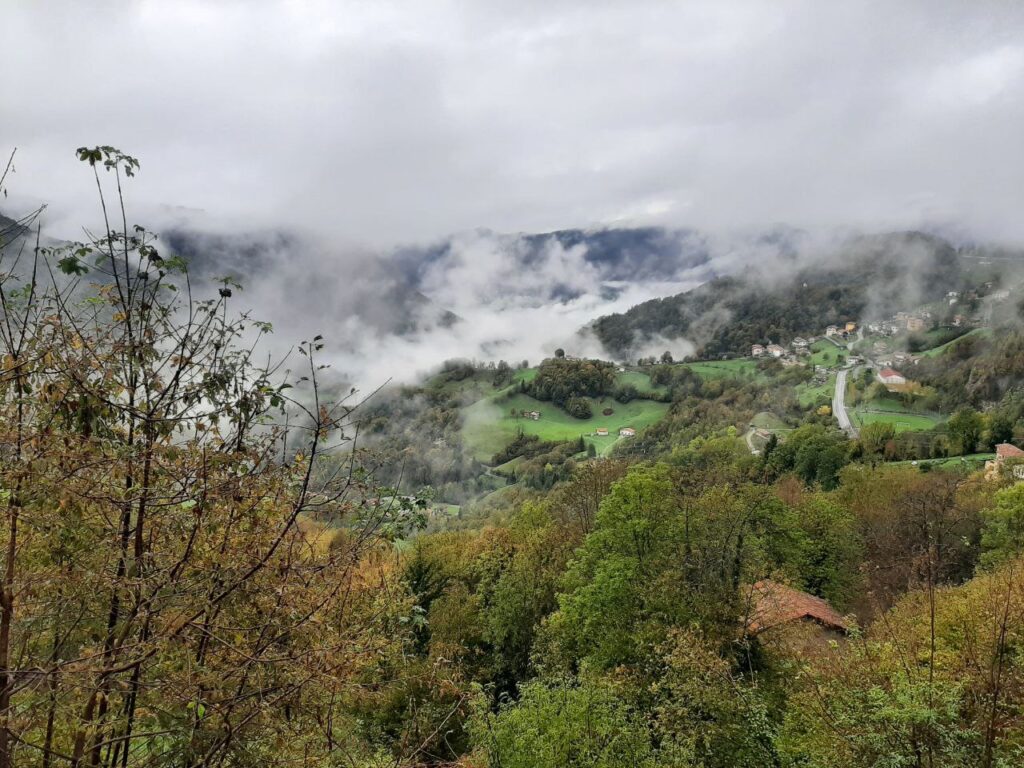The project Sentieri Creativi (“Creative Paths”) promotes training courses in the field of art linked to the environment and the mountainside in particular. The idea behind the project is to decline environmental themes—which are increasingly topical and a dominant element of our future—through artistic practices and visions, developing works that integrate with the natural setting they are designed for and placed within, and that address the relationship between humankind and nature in an original way.
Sentieri Creativi unfolds through a residential arts training and production process, enabling participants to acquire knowledge and artistic skills and develop their own artistic project in dialogue with the mountain environment where it may be positioned.
This year’s edition was enriched by the collaboration with GAMeC which—together with the municipalities of Dossena and Roncobello—proposed a second residency stage.
Brief interviews with the artists of the two winning projects are to be found below.
Five questions to the artists Francesco Ferrero, Giammarco Cugusi and Roberto Picchi
The project in ten lines:
Francesco Ferrero: The project was created with the aim of engaging the community of Roncobello in a creative reinterpretation of local imagery, blending tradition and contemporaneity. Through this initiative, historical symbols are transformed, telling the collective identity and strengthening the bond between people and territory. The design process begins with research into the heraldic symbols of the place and their meaning, and then evolves into a creative workshop. In this phase, the children of Roncobello are involved in the creation of new graphic symbols, which will go on to compose banners. The final installation involves the display of three large banners in the Forcella Castle area. This act symbolizes a reconquest of the public space, visible and shared, celebrating new community imaginary.
Giammarco Cugusi e Roberto Picchi: Inspired by the serpentine morphology of the path that leads from the Dossena mines to the Becco, we imagined a sculptural path with stations that takes its cue from the processions typical of the rites of the Way of the Cross. Each aedicule is designed to be laid during the day of the inauguration, when a walk/procession will lead the community to activate the work until it reaches the Becco, metaphorically understood as a contemplative cathedral. The path becomes a timeline that, through images and words, connects what has been with the present and the future aspirations of those who live in and encounter this area today. On the opening day, it will be the villagers who will bring the path to life, telling the stories related to each sculpture/station, offering a direct and spontaneous narrative. Afterwards, a playlist will be elaborated on a digital playback platform, allowing the stories to be enjoyed at any time, creating an immersive and long-lasting experience.
How does the project proposal that you have devised dialogue with elements of the local context?
F.F.: The proposal to work on a site-specific work necessarily requires a very careful analysis of the local context. A first step in getting in touch with this territory is the study of history and, in particular, of heraldry. The fact that these symbols, through graphic strokes, represented the characteristics of each family tells us a lot about how a community identifies with its own peculiarities. Involving the community, especially the youth of Roncobello, means creating a new collective imagination that might re-establish a deep and renewed bond with the territory.
G.C./R.P.: The iconography of the stations/sculptures is developed from a dialogue with the inhabitants of Dossena and is inspired by the rich cultural heritage of the village, interweaving traditions, myths and practices that have deeply marked the life of the community (the masquerades, the tambourine ball game, the art of Filippo Alcaini, …). Each stage of the journey combines personal and collective memories with the aim of bringing out the community’s experience through a shared artistic experience. The Becco thus becomes the culminating point of the journey and a symbol of the link between the past and the aspirations of the Dossena of tomorrow.
Which are the most recurrent phases in the development process of a project?
F.F.: Undoubtedly the active involvement of the community. Co-designing means not only gathering ideas, but also developing every aspect of the project together, so that those who participate may actually feel a part of the final work.
G.C./R.P.: We have certainly touched and will touch on some of these steps in creating Stories from the Becco: research and immersion in context; dialogue with the community; experimentation, design and formalization; implementation and installation; activation and sharing.
What do you hope the communities might gain from the experience of your works?
F.F.: I hope this experience will allow them to experience a collective effort and challenge on both creative and imaginative levels. I would like to succeed together with them in discovering new ways of seeing and interpreting the contemporary, rediscovering an expressive capacity that still passes through imagery.
G.C./R.P.: We hope that from this experience, the community will gain a renewed sense of identity and belonging, seeing its cultural heritage enhanced and reinterpreted in an original way. We would like the work to become a space for dialogue and sharing, offering residents the opportunity to reflect on how their roots might nurture the future. We hope that the work will promote intergenerational dialogue, strengthening the link between historical memory and contemporary aspirations by allowing the community to recognize itself in a path of continuity.
And what, on the other hand, do you hope they don’t learn?
F.F.: The act of raising a flag is in itself powerful and could be misunderstood as a gesture of assertiveness or bullying. In this context, however, banners provide a safe context: it is a symbolic gesture meant to open up a space, inside and outside the community.
G.C./R.P.: We hope that community members will not perceive this project as a top-down initiative purely for tourism or unrelated to their history. We wouldn’t like a separation to be created between the work and the residents, as if it were intended only for outside visitors. Our wish is for it to be experienced as an authentic representation of their identity and memory, and not as a project aimed at showmanship or offering a superficial view of the area.
Sentieri Creativi is a project by Bergamo per Giovani, the youth policies of the Municipality of Bergamo, together with the Politecnico delle Arti “Donizetti-Carrara”, Alchimia Cooperativa Sociale and the patronage of Parco dei Colli di Bergamo.








